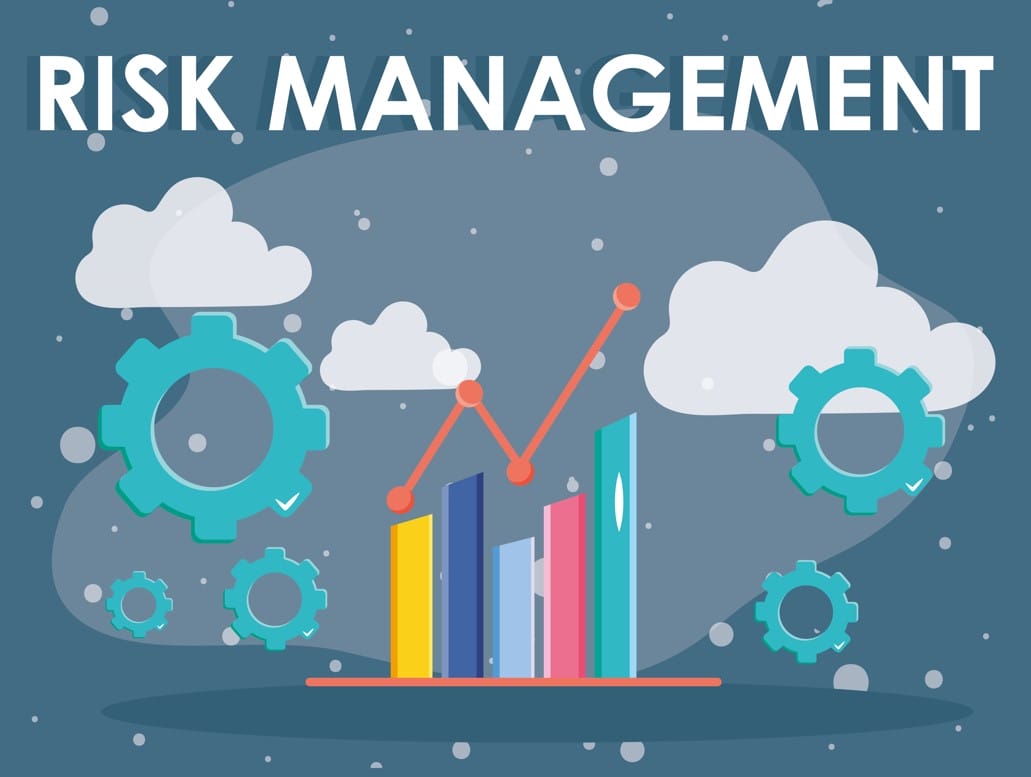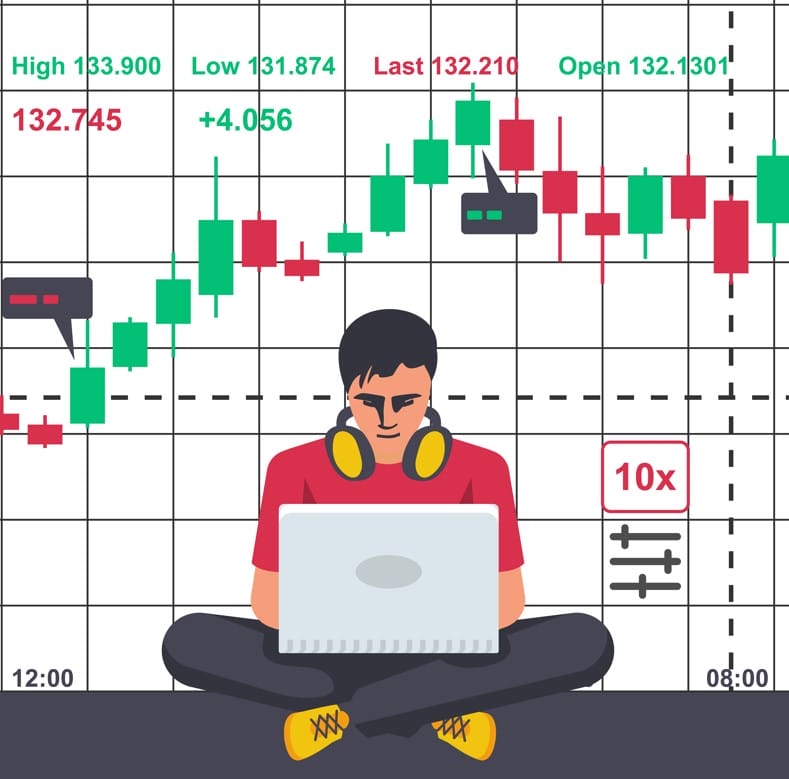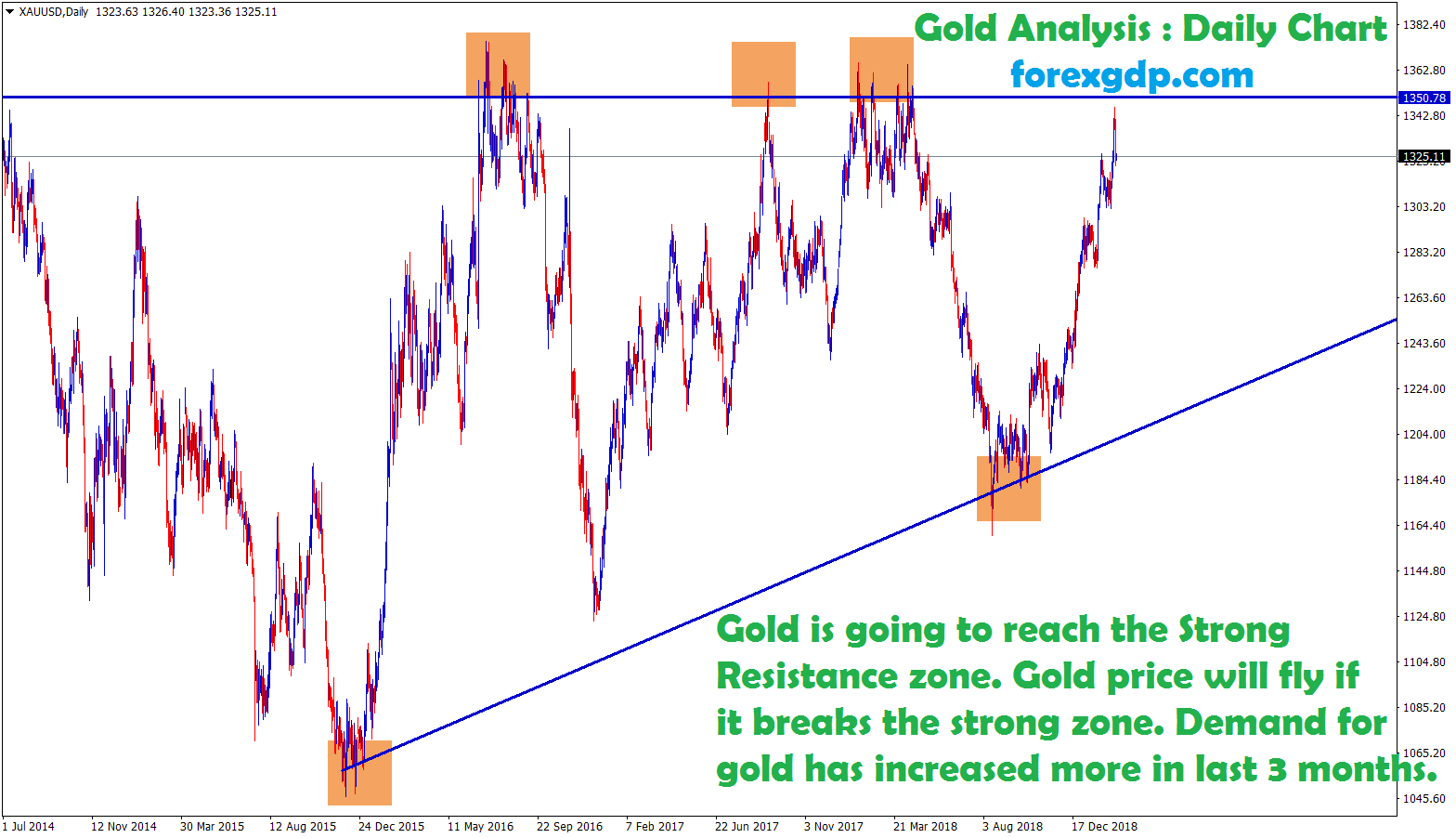Introduction
One constant that traders can rely on in the ever-evolving world of financial trading is change. Volatility is an element of change and characterises an industry where fortunes can be made and lost with the swiftness of a keystroke. For forex and indices traders, navigating volatility requires unique skills, strategies, and insights.
Our article, “Navigating Volatile Markets: Strategies for Forex and Indices Traders,” explores the art and science of trading amidst market fluctuations. Whether you’re an experienced trader seeking to refine your techniques or a novice looking to grasp the fundamentals, this comprehensive guide will equip you with the knowledge and tools needed to potentially thrive in an environment where change is the only constant.
From understanding the dynamics of forex and indices markets to harnessing effective risk management strategies and uncovering time-tested trading techniques, we’ll explore the critical components of success in this arena where volatility is not a challenge to fear but an opportunity to seize.
Explanation of market volatility and its impact on trading

Market volatility refers to the degree of price fluctuations or price swings that a financial instrument or market experiences over a given period. It is a key metric used by traders and investors to assess the level of risk and uncertainty in the financial markets. Market volatility can significantly impact trading, influencing various aspects of decision-making, risk management, and overall market behaviour. Here’s an explanation of market volatility and its impact on trading.
Price Fluctuations: Market volatility is characterised by rapid and significant price movements. When markets are highly volatile, prices can change quickly and by large amounts in a short period. This creates opportunities for traders to potentially profit from price swings and exposes them to higher risks.
Risk and Uncertainty: High volatility signifies increased uncertainty in the market. Traders must recognise that more significant price fluctuations can lead to substantial gains and losses. Therefore, it is crucial to have adequate risk management strategies in place to mitigate potential losses.
Trading Opportunities: Volatility can present trading opportunities. Traders who can accurately predict the direction of price movements in volatile markets may benefit from substantial profits. Day traders, in particular, often thrive in volatile environments where they can potentially capitalise on short-term price swings.
Liquidity: Highly volatile markets can also experience fluctuations in liquidity. Liquidity refers to the ease with which an asset can be bought or sold without significantly impacting its price. In highly volatile conditions, liquidity can dry up, making it challenging to execute large trades without affecting prices.
Impact on Trading Styles: Different trading styles are suited to different levels of volatility. For example, scalpers and day traders favour volatile markets because they can potentially profit from frequent price changes. Conversely, longer-term position traders may find extreme volatility unsettling and may prefer more stable market conditions.
News and Events: Volatility is often triggered by news releases, economic events, geopolitical developments, or unexpected market shocks. Traders must stay informed about these events as they can profoundly and suddenly impact asset prices.
Increased Risk of Stop-Loss Triggers: Traders commonly use stop-loss orders to limit potential losses. In highly volatile markets, these orders are more likely to be triggered, potentially leading to unexpected losses if prices reverse quickly after hitting the stop-loss levels.
Emotional Impact: Trading in volatile markets can be emotionally taxing. Rapid price swings can lead to stress, anxiety, and impulsive decision-making. Traders must maintain discipline and emotional control, and consider the merit in sticking to their trading plans even when faced with extreme volatility.
Market volatility is a double-edged sword in trading. While it offers opportunities for substantial profits, it also carries increased risks and challenges. Successful traders recognise the impact of volatility and adapt their strategies and risk management techniques accordingly.
Whether you are a day trader, swing trader or position trader , understanding and effectively managing market volatility is essential for sustained success in the financial markets.
Strategies and tips for navigating and capitalising on volatility in both forex and indices markets

Navigating and capitalising on volatility in forex and indices markets requires a well-thought-out strategy that balances risk and reward. Here are some tips and techniques to consider:
- Stay Informed:
- Monitor economic calendars and news feeds for upcoming events, as economic releases and geopolitical developments can trigger volatility.
- Develop a Trading Plan:
- Establish clear entry and exit points for your trades.
- Set stop-loss and take-profit orders to manage risk.
- Define your risk tolerance and position sizing based on your account size and risk appetite.
- Use Technical Analysis:
- Utilise technical indicators and chart patterns to identify potential entry and exit points.
- Look for support and resistance levels to gauge potential price reversals.
- Employ Fundamental Analysis:
- Understand the economic factors that influence the forex and indices markets.
- Analyse interest rates, inflation, and central bank policies for forex trading.
- Consider earnings reports, economic data, and global events for indices trading.
- Diversify Your Portfolio:
- Avoid over-concentration in a single currency pair or index.
- Diversification can spread risk and reduce the impact of volatility on your overall portfolio.
- Use Volatility Indicators:

- Incorporate volatility indicators like the Average True Range (ATR) to gauge market volatility.
- Adjust your trading strategy based on current volatility levels.
- Scalping and Day Trading:
- Consider short-term trading strategies like scalping and day trading in highly volatile markets.
- These approaches aim to capitalise on quick price movements during the trading day.
- Swing Trading:
- Swing trading involves holding positions for a few days to weeks.
- It can potentially be effective in capturing larger price swings in moderately volatile markets.
- Trend Following:
- Identify strong trends and trade in the direction of the trend.
- Use technical indicators like moving averages to confirm trends.
- Risk Management:
- Limit the size of your positions relative to your account balance. Avoid risking more than a small percentage of your trading capital on a single trade.
- Regularly review and adjust your stop-loss orders as prices move.
- Practice Patience:
- Avoid chasing after every market move.
- Wait for high-probability setups that align with your trading plan.
- Simulate and Backtest:
- Practise a new strategy in a demo account before implementing it.
- Backtest your strategies using historical data to assess their effectiveness.
- Stay Disciplined:
- Stick to your trading plan, even when emotions run high due to volatility.
- Avoid impulsive decisions that can lead to losses.
- Monitor Position Correlations:
- Consider correlations between different currency pairs or indices.
- Diversify your positions to reduce risk if you have highly correlated trades.
- Review and Adapt:
- Continually assess the effectiveness of your strategies.
- Adapt to changing market conditions and adjust your approach as needed.
Remember that no strategy guarantees profits, and trading in volatile markets carries inherent risks. Combining these strategies with thorough research, risk management, and a disciplined approach to trading is essential. Additionally, seek advice fromfinancial professionals to enhance your trading skills in volatile forex and indices markets.
Tips for adjusting trading strategies during high volatility periods
Trading during high volatility periods can be challenging, but it also presents opportunities for traders to potentially capitalise on price fluctuations. To adjust your trading strategies effectively during these times, consider the following tips:
- Monitor Economic Events and News:
- Stay updated on economic calendars and news releases, which can significantly impact volatility.
- Be prepared for unexpected news events and their potential market-moving effects.
- Use Volatility Indicators:
Incorporate volatility indicators. Adjust your position sizing and stop-loss levels based on the indicator’s readings.
- Bollinger Bands
- ATR – Average True Range Indicator
- VIX – Volatility Index
- Keltner Channel Indicator
- Donchian Channel Indicator.
- Tighten Risk Management:
- Lower your position size to reduce risk per trade. Smaller positions can help protect your capital during turbulent times.
- Consider using tighter stop-loss orders to limit potential losses.
- Avoid Overleveraging:
- High volatility can lead to rapid price movements, magnifying losses if you’re overleveraged.
- Trade with lower leverage or consider reducing your position size to manage risk.
- Be Selective with Trades:
- Focus on high-probability setups and avoid chasing after every market move.
- Wait for clear signals and setups that align with your trading plan.
- Shorten Timeframes:
- Consider shorter timeframes for your trades, such as day trading or scalping, to take advantage of intraday price movements.
- Shorter timeframes can also help reduce exposure to overnight risk.
- Use Technical Analysis Wisely:
- Technical analysis can be valuable during high volatility, but be cautious of false signals.
- Use a combination of technical indicators and confirmatory tools to filter out noise.
- Trade Liquid Assets:
- Stick to trading highly liquid currency pairs or indices to ensure you can generally quickly enter and exit positions.
- Illiquid assets can have exaggerated price swings and may be harder to trade during volatility.
- Diversify Your Portfolio:

- Avoid over-concentration in a single asset or market.
- Diversification can spread risk and reduce the impact of volatility on your overall portfolio.
- Stay Calm and Patient:
- High volatility can evoke strong emotions, leading to impulsive decisions.
- Maintain discipline, stick to your trading plan, and avoid making emotional trades.
- Adjust Profit Targets:
- Consider adjusting your profit targets to reflect the increased price swings during extreme volatility.
- Lock in profits more quickly to protect gains.
- Hedge Your Positions:
- In some cases, consider using hedging strategies to offset potential losses in your existing positions.
- Be aware of the costs and implications of hedging.
- Stay Informed and Adaptive:
- Continually assess market conditions and adjust your strategies accordingly.
- Be flexible and ready to pivot if market dynamics change.
- Learn from Experience:
- Keep a trading journal to record your trades, strategies, and lessons learned during volatile periods.
- Use this information to improve your trading approach over time.
Risk management techniques specific to volatile markets

Risk management is a crucial aspect of trading, and it becomes even more essential in volatile markets, where price fluctuations can be rapid and unpredictable. To protect your capital and navigate volatile markets effectively, consider the following risk management techniques, but be mindful that stop losses are not guaranteed, and slippage can occur.
- Position Sizing:
- Determine the size of your position based on your risk tolerance and the market’s volatility. In highly volatile markets, reduce your position size to limit potential losses.
- Stop-Loss Orders:
- Always use stop-loss orders to define the maximum amount you’re willing to risk on a trade. Place stop-loss levels at strategic points, such as support and resistance levels or based on volatility indicators.
- Trailing Stop-Loss:
- Consider using trailing stop-loss orders that automatically adjust as the price moves in your favour. This allows you to lock in profits while still protecting against reversals.
- Take-Profit Orders:
- Set take-profit orders to secure profits at predefined levels. Adjust these levels based on the market’s volatility and the potential for price swings.
- Risk-Reward Ratio:
- Determine your risk-reward ratio for each trade. A common rule of thumb is to aim for a ratio of at least 1:2, meaning your potential reward should be at least twice the size of your risk.
- Diversification:
- Avoid over-concentration in a single asset or market. Diversifying your portfolio can help spread risk and reduce the impact of a single trade’s volatility on your overall capital.
- Use Leverage Wisely:
- In volatile markets, be cautious with leverage. High leverage can amplify both gains and losses. Consider using lower leverage or reducing your position size to manage risk.
- Risk Percentage Per Trade:
- Determine the maximum percentage of your trading capital you are willing to risk on a single trade. Typically, this percentage should be small, especially in volatile conditions.
- Trade Liquid Assets:
- Focus on trading highly liquid assets to ensure you can quickly enter and exit positions without significant slippage, even during periods of high volatility.
- Avoid Revenge Trading:
- Refrain from attempting to recover losses by increasing your position size or taking impulsive trades. Stick to your trading plan and risk management rules.
- Stay Informed and Adaptive:
- Monitor market conditions and adjust your risk management strategies as market dynamics change.
- Use Volatility Indicators:
- Incorporate volatility indicators to gauge the market’s current volatility. Adjust your risk management parameters accordingly.
- Simulate and Backtest:
- Practise your risk management techniques in a demo account or through backtesting to ensure they align with your trading strategy and goals.
- Margin Call Awareness:
- Be aware of your broker’s margin requirements and the potential for margin calls in volatile markets. Always have enough margin to cover your positions.
- Emergency Exit Plan:
- Prepare for extreme market conditions by having an emergency exit plan. This might include predefined actions, such as closing all positions if certain conditions are met.
- Continuous Learning:
- Stay committed to improving your risk management skills. Learn from both your successful and unsuccessful trades to refine your approach.
Risk management is not a one-size-fits-all approach and should be tailored to your trading style, objectives, and risk tolerance. Protecting your capital while taking advantage of trading opportunities is vital in volatile markets. Adjust your risk management techniques to adapt to changing market conditions and protect yourself from significant losses.
Case studies illustrating successful trading strategies during volatile market conditions

Let’s explore two specific trading case study examples that illustrate successful trading strategies during volatile market conditions—one in the forex market and another in indices.
Forex Trading Case Study:
Scenario: Imagine a forex trader specialising in trading the EUR/USD currency pair. In this case, the trader faces increased volatility due to a significant economic announcement, such as a central bank interest rate decision.
Trading Strategy:
- Pre-Announcement Analysis:
- Ahead of the interest rate announcement, the trader conducts thorough research and analysis of the forex market, focusing on the EUR/USD pair.
- They identify key support and resistance levels and the expected market sentiment based on economic forecasts and experts’ opinions.
- Setting Up Stop-Loss and Take-Profit Orders:
- The trader calculates an appropriate position size based on their risk tolerance and the potential volatility expected after the announcement.
- Sets a stop-loss order below a critical support level to limit potential losses if the market reacts negatively*.
- Establishes a take-profit order at a predefined resistance level, aligning with a favourable risk-reward ratio.
*It’s important to note that stop losses are not guaranteed, and slippage can occur.
- Implementation:
- As the interest rate announcement approaches, the trader enters a long position (betting that the EUR/USD will rise) or a short position (betting that it will fall) based on their analysis and market sentiment.
- Ensures that all orders are in place, including stop-loss and take-profit levels.
- Managing the Trade:
- After the announcement, the market experienced significant volatility, leading to a sharp initial move.
- The trader closely monitors the trade, adjusts the stop-loss to break even as the market moves in their favour, and trails the take-profit level to lock in profits.
- Exit Strategy:
- Once the take-profit level is reached, the trader closes the position, realising a profit.
- The stop-loss order limits potential losses if the market turns against the trade.
Outcome: In this case, the trader’s analysis and risk management helped them capitalise on the volatile market conditions created by the interest rate announcement. They executed their strategy effectively and realised a profitable trade.
Index trading case study

Scenario:
Imagine a trader specialising in trading the S&P 500 index, representing a basket of 500 of the largest publicly traded companies in the United States. The trader aims to profit from short-term price movements in the index using a day trading strategy.
Trading Strategy:
- Pre-Market Analysis:
- The trader starts their day by conducting pre-market analysis, focusing on key technical and fundamental factors that may impact the S&P 500.
- They review overnight developments, such as international markets and economic news, that might influence the index.
- Technical Analysis:
- The trader uses technical analysis to identify potential entry and exit points.
- They look for critical support and resistance levels, trendlines, and technical indicators like moving averages and Relative Strength Index (RSI).
- Intraday Trading Plan:
- Based on their analysis, the trader develops an intraday trading plan with specific entry and exit points.
- They set profit targets and stop-loss levels to manage risk.
- Real-Time Monitoring:
- Once the market opens, the trader closely monitors the price movements of the S&P 500 index in real time.
- They use trading software and charting tools to track the index’s performance and execute trades quickly.
- Trade Execution:
- When a favourable setup aligns with their trading plan, the trader enters a position in the S&P 500 index through a financial instrument such as a CFD.
- Risk Management:
- The trader uses a tight stop-loss order to limit potential losses on the trade*.
- They also have a predefined profit target to capture gains.
- Position sizing is adjusted to ensure they are not risking more than a predetermined percentage of their trading capital on a single trade.
*It’s important to note that stop losses are not guaranteed, and slippage can occur.
- Scalping and Day Trading:
- The trader uses scalping or day trading to capture small price movements within the trading session.
- They may open multiple trades throughout the day if opportunities arise.
- Continuous Monitoring:
- The trader monitors the S&P 500 index and adjusts their positions or exits trades as market conditions evolve.
- End-of-Day Review:
- At the end of the trading day, the trader reviews their trades, assesses their performance, and identifies areas for improvement.
Outcome: In this example, the trader focuses solely on trading the S&P 500 index. By employing technical analysis, risk management techniques, and a disciplined day trading approach, they aim to profit from the short-term price fluctuations in the index. The success of their trading strategy depends on their ability to adapt to changing market conditions and execute trades with precision.
It’s important to note that trading stock market indices, like the S&P 500, requires a deep understanding of the index’s components, market dynamics, and technical analysis. Additionally, trading indices can involve potential profits and losses, so risk management is essential for overall success.
In conclusion, navigating volatile markets, whether in forex or stock market indices, is a dynamic endeavour that demands a combination of skill, knowledge, and discipline. As explored throughout this article, volatility can be a double-edged sword, offering both opportunities and risks for traders.
Successful trading in volatile markets begins with a solid foundation of risk management. Without adequate risk mitigation strategies, the potential for significant losses becomes too real. Position sizing, stop-loss orders, and diversification are not just tools; they are the potential safeguards that can help to protect your capital.
Moreover, adapting your trading strategies to the ever-changing market conditions is vital. Whether through technical analysis, fundamental analysis, or a combination of both, staying informed and flexible is paramount. Continuously refine your approach based on real-time data and market developments.
Remember that patience is a virtue in trading. Impulsive decisions born out of fear or greed can lead to costly mistakes. Stick to your trading plan, remain disciplined, and avoid chasing after every market move.
Lastly, education and experience are your greatest allies. Engage in continuous learning, practice in simulated environments, and seek mentorship or guidance from seasoned traders. In volatile markets, knowledge and composure are your most potent assets.
As you tackle the unpredictable world of volatile markets, embrace the challenges and opportunities offered. With the right strategies, risk management, and a steadfast commitment to your goals, you could navigate these turbulent waters and emerge a more resilient and successful trader.




